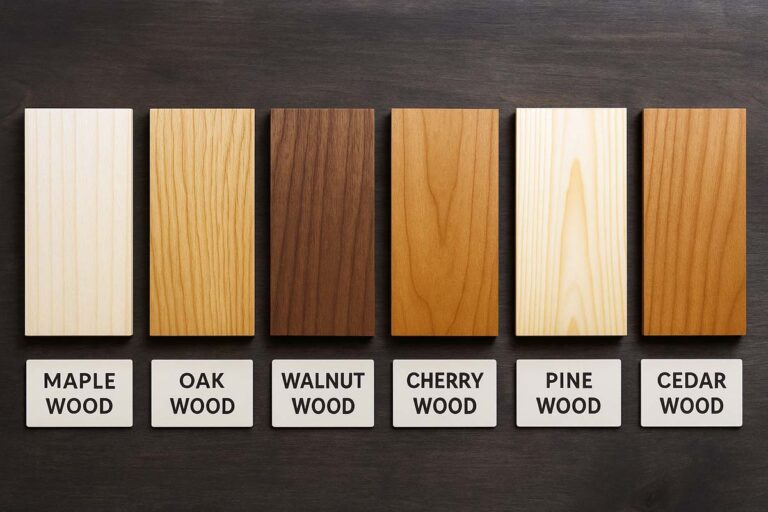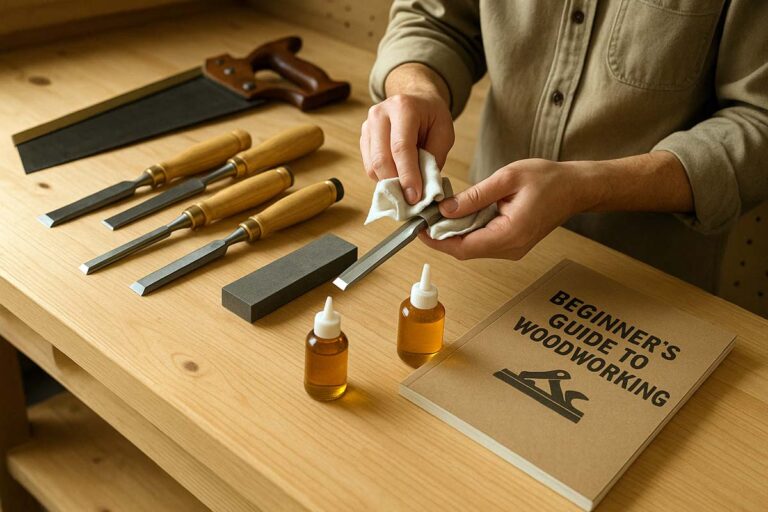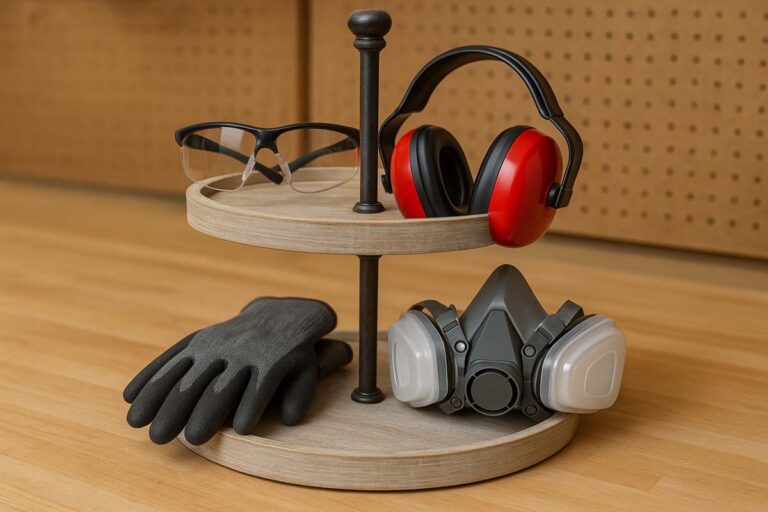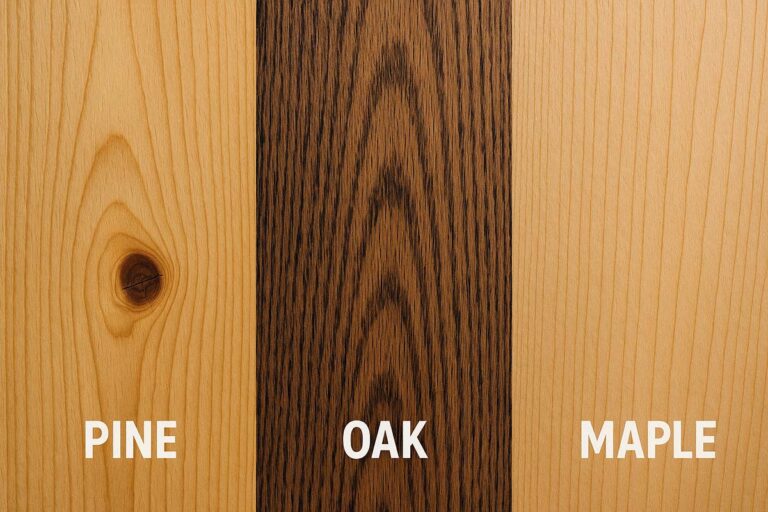5 DIY Material Substitutes for Your Tiered Tray Stand
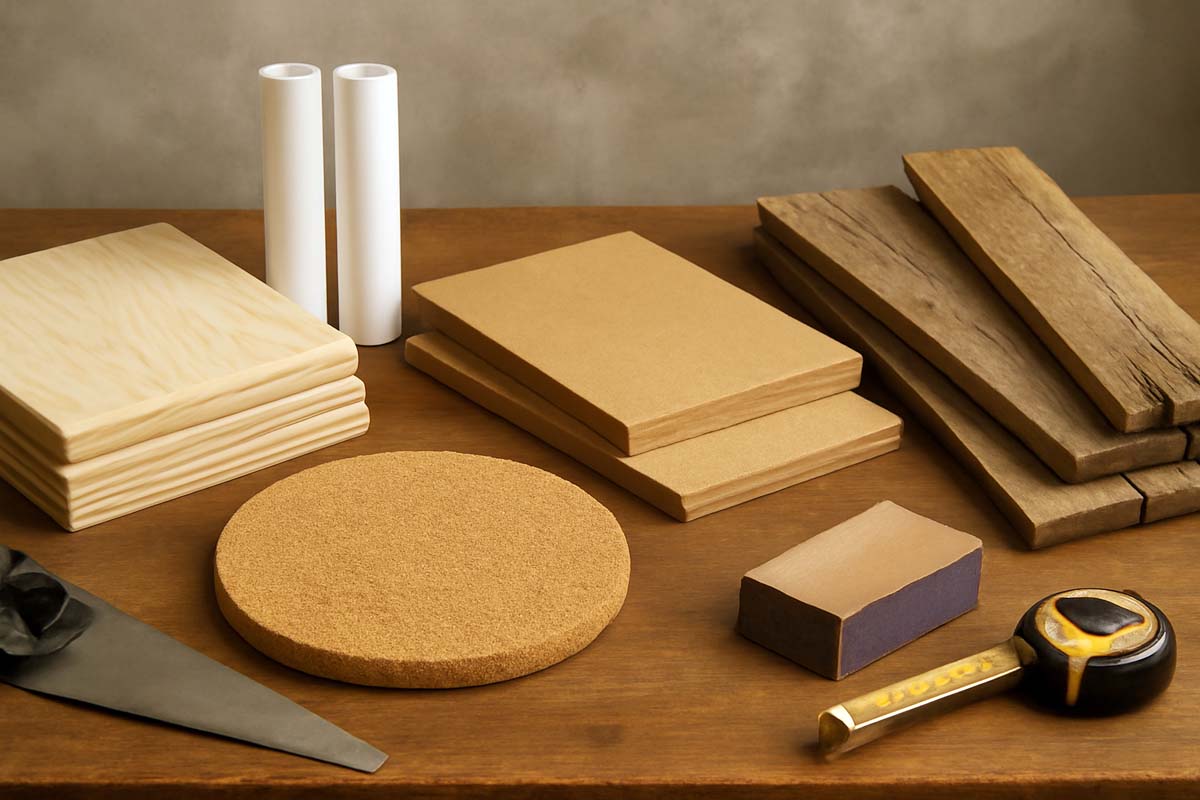
Looking for DIY material substitutes to enhance your tiered tray stand project? You’re in the right place! Whether you’re trying to cut costs or simply want to experiment with different materials, these substitutes can help you create a beautiful and functional piece without compromising on quality.
As a woodcraft enthusiast, I know how important it is to find materials that not only look great but also make the crafting process smoother. Let’s dive into these affordable, easy-to-work-with alternatives that will take your tiered tray stand to the next level.
Contents Here
- 1 1. Plywood Instead of Solid Wood
- 2 2. PVC Pipe Instead of Metal Rods
- 3 3. MDF (Medium Density Fiberboard) Instead of Hardwood
- 4 4. Cork Instead of Glass for Tray Base
- 5 5. Repurposed Wooden Pallets Instead of New Lumber
- 6 FAQs about DIY Material Substitutes
- 6.1 Can I use plywood for the entire tiered tray stand, including the trays and supports?
- 6.2 How do I attach PVC pipe to my tiered tray stand?
- 6.3 Is MDF durable enough for a tiered tray stand?
- 6.4 What should I do if my repurposed pallet wood has rough or damaged sections?
- 6.5 Can I paint or stain PVC pipe for my tiered tray stand?
- 7 Wrapping It Up
1. Plywood Instead of Solid Wood
Why Plywood?
When it comes to crafting tiered tray stands, solid wood is often the first choice. It’s sturdy, beautiful, and gives that classic wood look. But solid wood can be expensive, and sometimes it’s a bit overkill for smaller projects like tiered trays.
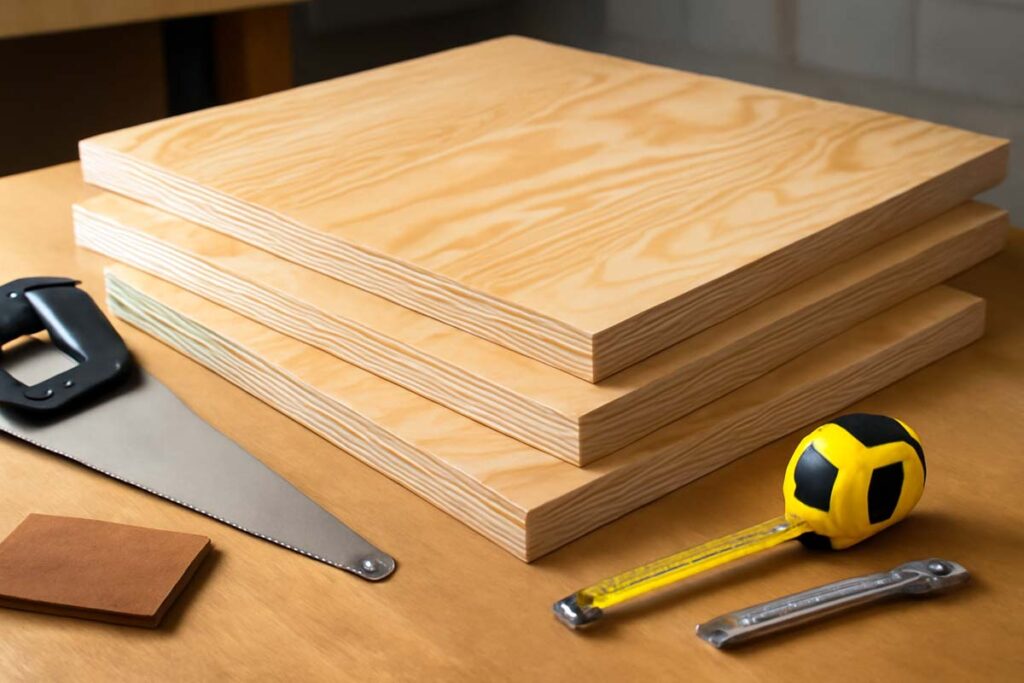
Plywood is an excellent substitute here. It’s cheaper, lightweight, and incredibly versatile. Modern plywood is also made to look fantastic, with finishes that mimic high-end wood grains, so you won’t miss the solid wood look. Plus, it’s easier to work with, especially if you’re new to woodworking.
Tips for Using Plywood:
- Choose a high-quality plywood: Go for birch or maple plywood, which has a smooth, clean finish.
- Sealing: Plywood edges can sometimes be rough. A good sanding and sealing will give your tray stand a polished, professional look.
- Thickness: Stick with ½ inch to ¾ inch thickness for durability without the weight of solid wood.
2. PVC Pipe Instead of Metal Rods
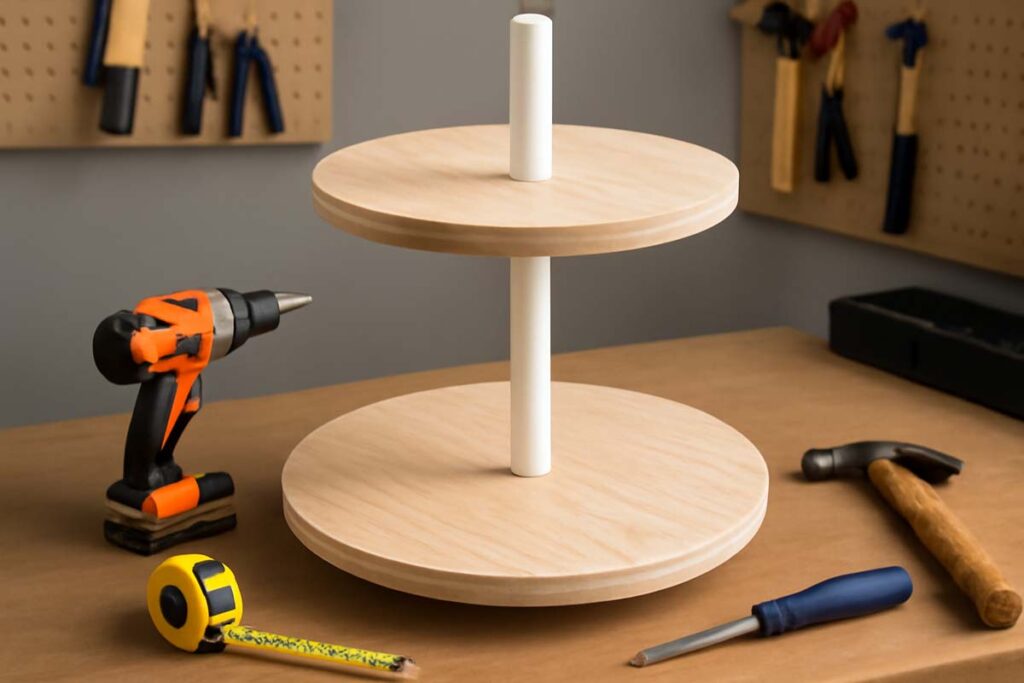
Why PVC Pipe?
Traditionally, metal rods or dowels are used to create the vertical supports for your tiered tray stand. While metal is durable and strong, it’s also quite expensive, especially if you’re buying it in specialty sizes or finishes.
A great alternative is PVC pipe. It’s lightweight, affordable, and available in various diameters, making it an easy material to work with. It’s also durable enough to hold the weight of your tray’s items without wobbling or tipping over.
Tips for Using PVC Pipe:
- Painting PVC: You can paint PVC pipe to match your tiered tray design. Use spray paint or acrylic paint designed for plastic to achieve a smooth, even finish.
- Cutting: PVC pipe is super easy to cut with a hacksaw, making it a convenient choice for custom sizing.
- Attaching: Use strong adhesive or wood screws to secure the PVC pipe to your tray’s base or platform. Just make sure to pre-drill holes in the pipe if you plan on using screws.
3. MDF (Medium Density Fiberboard) Instead of Hardwood
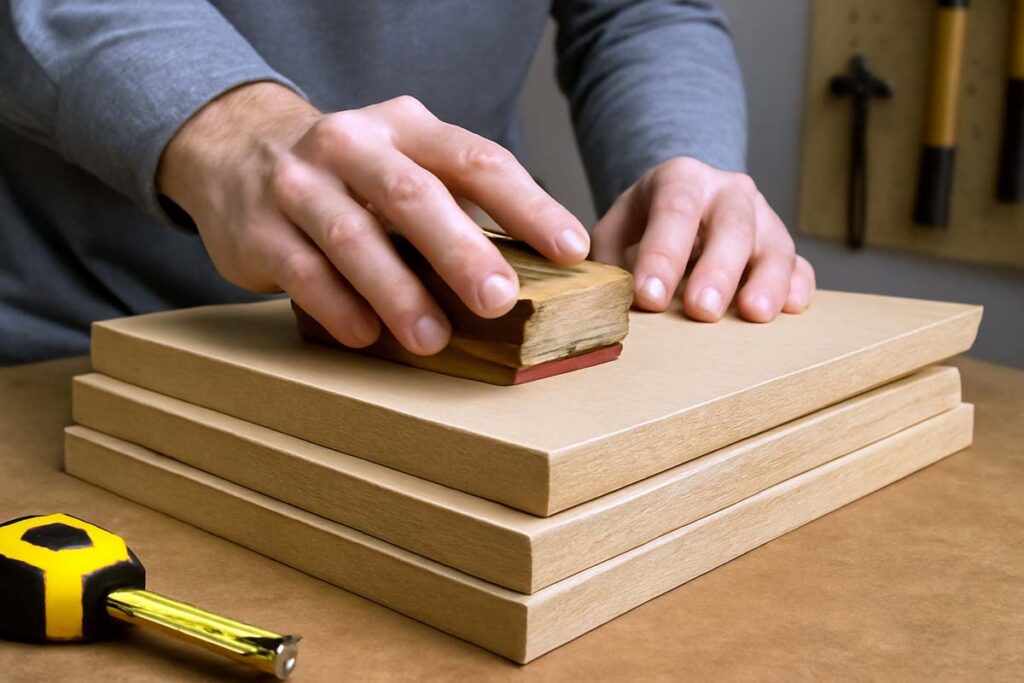
Why MDF?
If you want to get that beautiful, smooth surface for painting or decorating, MDF is an excellent choice. It’s cheaper than hardwood, and it has a consistent texture throughout, making it perfect for projects where you plan to add a lot of paint or decoration.
Hardwood is durable and solid, but it’s not always necessary for tiered tray stands, especially when you’re aiming for something that doesn’t need to bear a lot of weight. MDF is ideal for these types of DIY projects.
Tips for Using MDF:
- Sanding and Sealing: Because MDF can soak up paint and moisture, it’s important to seal it before applying any finishes. A layer of primer will help ensure smoothness and help the paint adhere better.
- Avoid Wet Conditions: MDF can swell if exposed to water or high humidity, so be mindful of where you place your finished tray stand.
4. Cork Instead of Glass for Tray Base
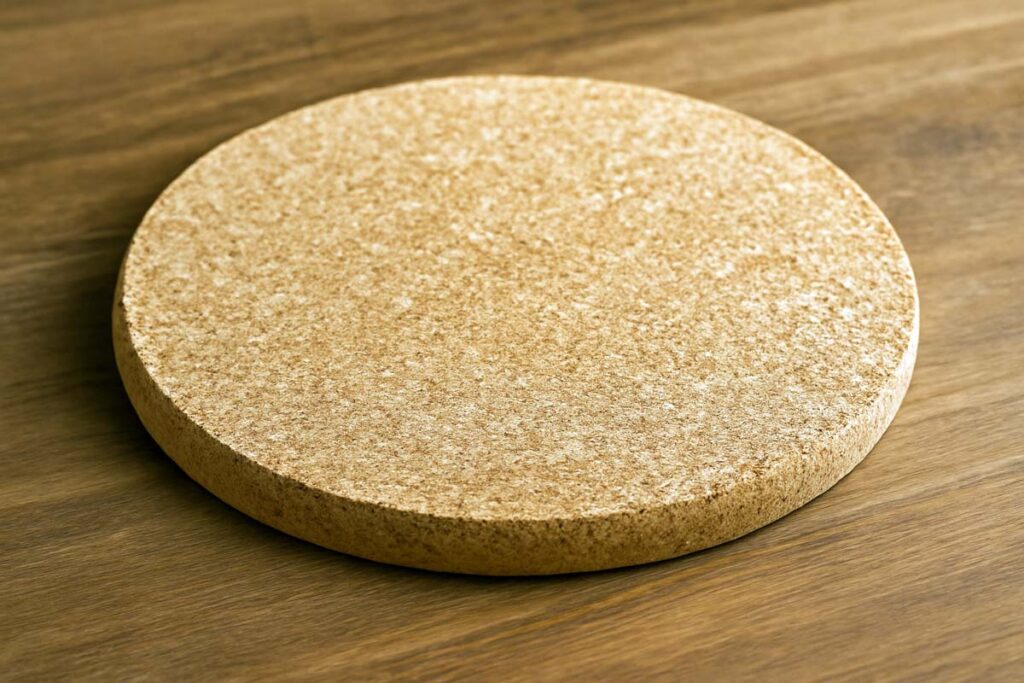
Why Cork?
For many tiered tray designs, glass is a popular choice for the base because of its elegant and shiny finish. However, glass can be heavy and fragile, which might not be the best choice for a frequently used tiered tray stand.
Cork is a perfect alternative. It’s lightweight, durable, and has a natural, rustic look that complements wooden stands. It’s also a great option if you’re looking for something a little softer, as it’s less likely to chip or break compared to glass.
Tips for Using Cork:
- Cutting Cork: Cork is easy to cut using a sharp utility knife, so you can customize the size of the tray base to fit your design perfectly.
- Layering: If you want extra thickness or stability, you can layer cork sheets. Just be sure to glue them together securely.
- Sealing: A light coat of clear polyurethane or a similar sealant will help preserve the cork’s natural texture and keep it from absorbing moisture.
5. Repurposed Wooden Pallets Instead of New Lumber
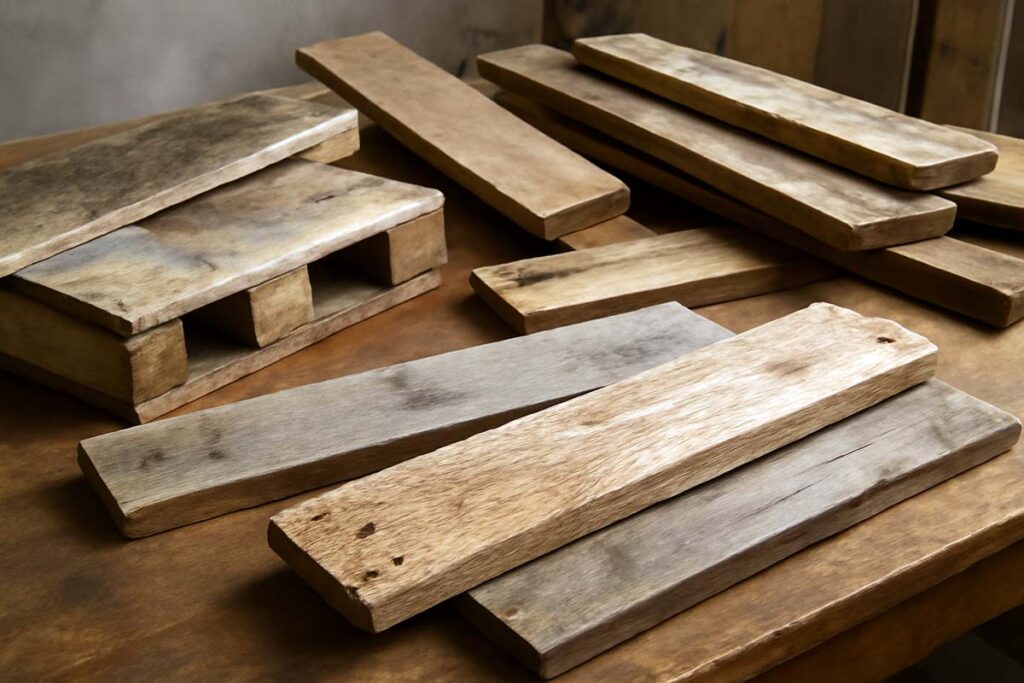
Why Repurposed Pallets?
If you’re aiming for a more eco-friendly, rustic look, repurposed wooden pallets are a fantastic material to consider. Using recycled pallets is a great way to save money and give your tiered tray stand a unique, weathered charm. Plus, you can find pallets for free or at a low cost, which makes them an attractive option for DIY projects.
The beauty of repurposed wood is that it often has a history or character that can add authenticity and personality to your tiered tray stand.
Tips for Using Repurposed Pallets:
- Disassembling Pallets: Use a crowbar or pallet buster tool to carefully take apart the pallet. Be sure to remove any nails or staples before working with the wood.
- Sanding: Pallet wood can be rough and splintery, so give it a good sanding to make it smooth and safe to work with.
- Finishing: You can leave the wood raw for a more rustic appearance, or stain it to match your decor style. A coat of polyurethane will also help protect the wood and give it a nice sheen.
FAQs about DIY Material Substitutes
Wrapping It Up
When it comes to crafting your tiered tray stand, there are plenty of options beyond the traditional materials that most people think of. Whether you choose plywood instead of solid wood, PVC pipe instead of metal rods, or cork instead of glass, these substitutes can save you money while still giving you a high-quality, professional finish. The key is to think outside the box, experiment with materials, and take your time to create something beautiful.
The best part? These material substitutes are readily available, easy to work with, and offer a variety of looks that will fit into any home decor style. So, get creative, and start crafting your tiered tray stand with these fantastic alternatives.
Remember, woodworking is all about making something uniquely yours, and you don’t always need the most expensive materials to do that. Trust me, you’ve got everything you need to create a gorgeous tiered tray stand that will be the perfect addition to any space.
Happy crafting!

